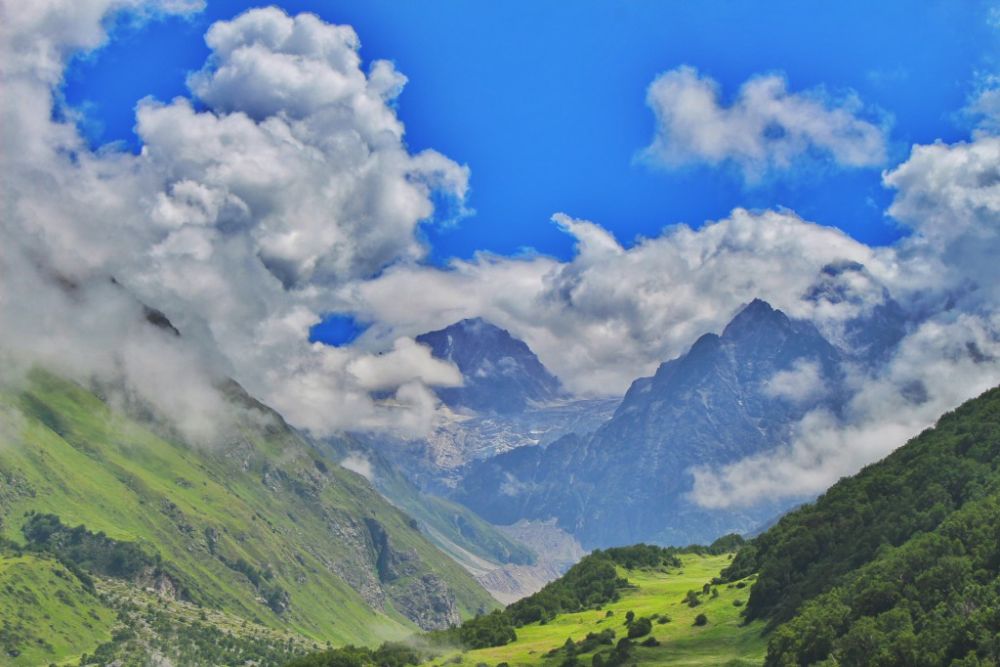

The Bhyundar Valley, also known as the Valley of Flowers, is a mesmerizing destination located in the Chamoli district of Uttarakhand, India. Renowned for its vibrant meadows of endemic alpine flowers and a variety of flora, this picturesque valley has been a beacon for nature lovers, botanists, trekkers, and pilgrims alike. The valley unfolds its beauty at an altitude of approximately 3,658 meters above sea level and doubles as a spiritual journey to the revered Hemkunt Sahib Gurudwara, one of the holiest sites in Sikhism.
The history of tourism in Bhyundar Valley is deeply connected with the discovery of its natural beauty and religious significance. The Valley of Flowers was first introduced to the world in 1931, when British mountaineers Frank S. Smythe, Eric Shipton, and R.L. Holdsworth stumbled upon it after a successful expedition of Mount Kamet. Captivated by its untouched beauty, Smythe later returned to the valley for further exploration and wrote a book titled "The Valley of Flowers," which unveiled the stunning visuals of the valley to a wider audience. This book played a crucial role in putting Bhyundar Valley on the map for tourists who were searching for new and exotic destinations.
Hemkunt Sahib has a more ancient and spiritual history, being named after the glacial lake Hemkunt adjacent to the Gurudwara. It is said to be the meditation ground of Guru Gobind Singh, the tenth Sikh Guru, in his previous life. The pilgrimage site was discovered by Sikh devotee Sohan Singh and established with the help of the former soldier Baba Modan Singh in the 1930s. Hemkunt Sahib is perched at an altitude of 4,633 meters and is only accessible by a challenging trek for a few months a year, usually from May to October, before it becomes enveloped in snow.
In recent years, there has been a heightened awareness around ecotourism and sustainable travel. Visitors to Bhyundar Valley are now more environmentally conscious, with both authorities and tourists working together to preserve the pristine conditions of the Valley of Flowers National Park. The park is also a UNESCO World Heritage Site, drawing international attention to the importance of conservation efforts in this region.
For Hemkunt Sahib, the tourism trend has been towards enhancing the facilities for pilgrims during their trek. The management now provides better shelter and amenities, ensuring the safety and comfort of the visitors. Digital connectivity has also improved, allowing pilgrims to share their spiritual journey with others around the world in real-time.
Tourism in Bhyundar Valley and Hemkunt Sahib remains both a challenge and an adventure due to its high altitude and remote location. Yet, this only adds to the allure for visitors seeking both spiritual fulfillment and the sheer joy of experiencing one of nature's most breathtaking displays.
Tourists and pilgrims typically start their journey from Govindghat or Joshimath, embarking on a trek filled with panoramic views of the Himalayas. The tourism industry in and around these areas has developed accommodations and services to facilitate a range of experiences, from the rugged trails to the peaceful contemplation by the serene Hemkunt Lake.
With the right blend of spirituality, natural wonder, and the increasing ease of access, Bhyundar Valley and Hemkunt Sahib continue to be two of the most compelling destinations in Uttarakhand, India, enticing visitors from across the globe.